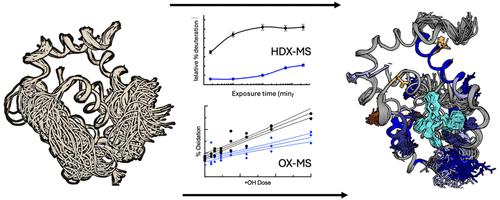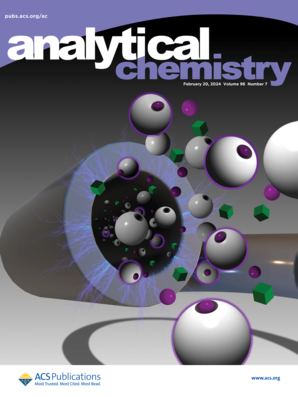Hydrogen/Deuterium Exchange and Protein Oxidative Footprinting with Mass Spectrometry Collectively Discriminate the Binding of Small-Molecule Therapeutics to Bcl-2
IF 6.7
1区 化学
Q1 CHEMISTRY, ANALYTICAL
引用次数: 0
Abstract
Characterizing protein–ligand interactions is crucial to understanding cellular metabolism and guiding drug discovery and development. Herein, we explore complementing hydrogen/deuterium exchange mass spectrometry (HDX-MS) with a recently developed Fenton chemistry-based approach to protein oxidative footprinting mass spectrometry (OX-MS) to discriminate the binding of small-molecule therapeutics. Using drug-dependent perturbation as the experimental report, this combination of techniques more clearly differentiates the in-solution binding profiles of Venetoclax (ABT-199, GDC-0199-AbbVie and Genentech) and a drug candidate S55746 (Servier) to the apoptotic regulatory protein Bcl-2 than either technique alone. These results highlight the value of combining these methods to compare compounds in drug discovery and development. To better understand the structural context of the HDX-MS and OX-MS drug-dependent perturbations, we mapped these data on Bcl-2-Venetoclax and Bcl-2-S55746 cocrystal structures and compared these results with the structure of apo Bcl-2. HDX-MS shows that Venetoclax more strongly impacts the protein backbone compared to S55746. OX-MS reveals oxidation perturbations rationalized by direct side-chain protection as well as by crystallographically observed drug-induced protein restructuring. Both methods report the perturbation of some, but not all, residues mapped within 4 Å of the bound drugs in the crystal structures. Concordant characterization of backbone and side-chain accessibility will enhance our understanding of in-solution protein structure dynamics and protein–ligand interactions during drug discovery, development, and characterization, particularly when high-resolution structures are lacking.

求助全文
约1分钟内获得全文
求助全文
来源期刊

Analytical Chemistry
化学-分析化学
CiteScore
12.10
自引率
12.20%
发文量
1949
审稿时长
1.4 months
期刊介绍:
Analytical Chemistry, a peer-reviewed research journal, focuses on disseminating new and original knowledge across all branches of analytical chemistry. Fundamental articles may explore general principles of chemical measurement science and need not directly address existing or potential analytical methodology. They can be entirely theoretical or report experimental results. Contributions may cover various phases of analytical operations, including sampling, bioanalysis, electrochemistry, mass spectrometry, microscale and nanoscale systems, environmental analysis, separations, spectroscopy, chemical reactions and selectivity, instrumentation, imaging, surface analysis, and data processing. Papers discussing known analytical methods should present a significant, original application of the method, a notable improvement, or results on an important analyte.
 求助内容:
求助内容: 应助结果提醒方式:
应助结果提醒方式:


